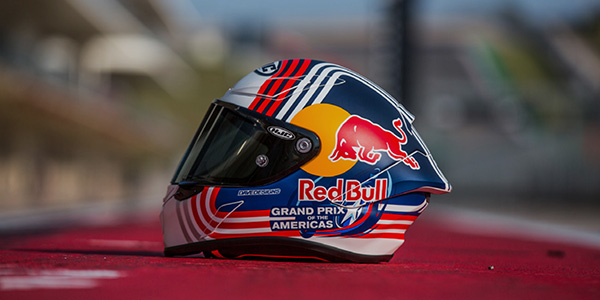Choosing the right helmet is a critical decision for riders. Not only does it ensure your safety, but it also impacts your comfort and overall riding experience. Among the most popular types of helmets are full-face and open-face helmets. Each has its pros and cons, and the best choice depends on your specific needs and riding style. In this article, we’ll compare full-face and open-face helmets in terms of safety, comfort, style, and more to help you make an informed decision.
What is a Full-Face Helmet?
A full-face helmet is a helmet that provides complete coverage of your head, including the chin and face. It features a chin bar and a visor, offering maximum protection and shielding against external elements.
Advantages of Full-Face Helmets:
- Maximum Safety:
- Full-face helmets provide the most comprehensive protection. They safeguard your head, face, and jaw, significantly reducing the risk of injury during accidents.
- Weather Protection:
- These helmets shield you from rain, wind, dust, and sunlight, ensuring a more comfortable ride in various conditions.
- Aerodynamics:
- Full-face helmets are designed to reduce wind resistance, making them ideal for high-speed riding.
- Noise Reduction:
- The enclosed design minimizes wind noise, providing a quieter riding experience.
- Versatility:
- Many full-face helmets come with features like integrated sun visors, pinlock systems to prevent fogging, and Bluetooth compatibility.

Disadvantages of Full-Face Helmets:
- Weight and Bulkiness:
- Full-face helmets can be heavier and bulkier than other types, potentially causing discomfort during long rides.
- Limited Ventilation:
- Some riders may feel hot or claustrophobic due to reduced airflow.
- Convenience:
- Removing and putting on a full-face helmet takes more time compared to open-face helmets.
Ideal For:
- High-speed riders, touring enthusiasts, and anyone prioritizing safety.
What is an Open-Face Helmet?
An open-face helmet, also known as a 3/4 helmet, covers the top, back, and sides of your head but leaves your face exposed. These helmets are popular among cruiser riders and those who value a sense of freedom.
Advantages of Open-Face Helmets:
- Enhanced Visibility:
- With an open-face design, riders have a wider field of vision, making it easier to see their surroundings.
- Better Ventilation:
- Open-face helmets allow more airflow, keeping riders cooler, especially during hot weather.
- Comfort:
- These helmets are generally lighter and less restrictive, offering a more comfortable experience for casual rides.
- Classic Style:
- Open-face helmets have a retro aesthetic that appeals to many riders, especially those with vintage or cruiser bikes.
- Ease of Use:
- They’re easier to put on and take off and allow for better communication without removing the helmet.
Disadvantages of Open-Face Helmets:
- Reduced Safety:
- Without a chin bar, open-face helmets offer less protection for the face and jaw in the event of an accident.
- Exposure to Elements:
- Riders are more exposed to wind, rain, dust, and debris.
- Noise Levels:
- These helmets provide little to no noise insulation, which can be uncomfortable on long rides.
- Lack of Features:
- Open-face helmets often lack advanced features like integrated Bluetooth or sun visors.
Ideal For:
- City commuters, cruiser riders, and those who prioritize comfort and style over maximum protection.
Key Comparisons Between Full-Face and Open-Face Helmets
1. Safety
- Full-Face: Offers superior safety with full head and face coverage, protecting against impact and abrasions.
- Open-Face: Provides good protection for the top, back, and sides of the head but leaves the face and chin vulnerable.
2. Comfort
- Full-Face: May feel restrictive, especially in hot weather, but many models have advanced ventilation systems.
- Open-Face: Lightweight and airy, perfect for short rides and warm climates.
3. Weather Protection
- Full-Face: Keeps you shielded from rain, wind, and debris, making it ideal for all-weather riding.
- Open-Face: Leaves your face exposed, which can be uncomfortable in harsh weather conditions.
4. Visibility
- Full-Face: Modern designs offer wide visors, but some riders may still feel limited peripheral vision.
- Open-Face: Provides an unobstructed view, making it easier to navigate busy streets.
5. Style
- Full-Face: Sporty and modern, suitable for high-performance bikes.
- Open-Face: Classic and retro, complements vintage and cruiser motorcycles.
6. Noise Insulation
- Full-Face: Reduces wind noise, enhancing the overall riding experience.
- Open-Face: Minimal noise reduction, which can be a drawback on highways.
7. Cost
- Full-Face: Typically more expensive due to advanced features and materials.
- Open-Face: Generally more affordable, appealing to budget-conscious riders.

Factors to Consider When Choosing Between Full-Face and Open-Face Helmets
- Type of Riding:
- For high-speed or long-distance rides, a full-face helmet is the better choice. For casual city commuting, an open-face helmet may suffice.
- Weather Conditions:
- If you frequently ride in extreme weather, a full-face helmet will offer better protection.
- Safety Priorities:
- Those who prioritize maximum safety should opt for a full-face helmet, while open-face helmets are suitable for riders who accept a trade-off for comfort and style.
- Personal Style:
- Consider how the helmet matches your bike and your personal aesthetic preferences.
- Budget:
- While safety is paramount, your budget may influence your choice. Both options have a wide price range depending on the brand and features.
Popular Brands Offering Both Full-Face and Open-Face Helmets
- Shoei: Known for their high-quality full-face helmets like the Shoei RF-1400 and classic open-face designs.
- Bell Helmets: Offers a range of durable and stylish helmets for both categories.
- AGV: Combines safety and style in their full-face and open-face options.
- HJC: Provides affordable and reliable helmets for all riders.
- Arai: Renowned for their premium quality and attention to safety.
Conclusion
The choice between a full-face and open-face helmet ultimately comes down to your specific needs and preferences. Full-face helmets excel in safety, weather protection, and noise insulation, making them ideal for long-distance and high-speed riders. On the other hand, open-face helmets offer greater comfort, ventilation, and a classic aesthetic, appealing to casual riders and city commuters.
Regardless of the type you choose, always ensure that your helmet meets safety standards like DOT, ECE, or SNELL certifications. Investing in the right helmet not only enhances your riding experience but also ensures your safety on the road. Ride safe and choose wisely!


